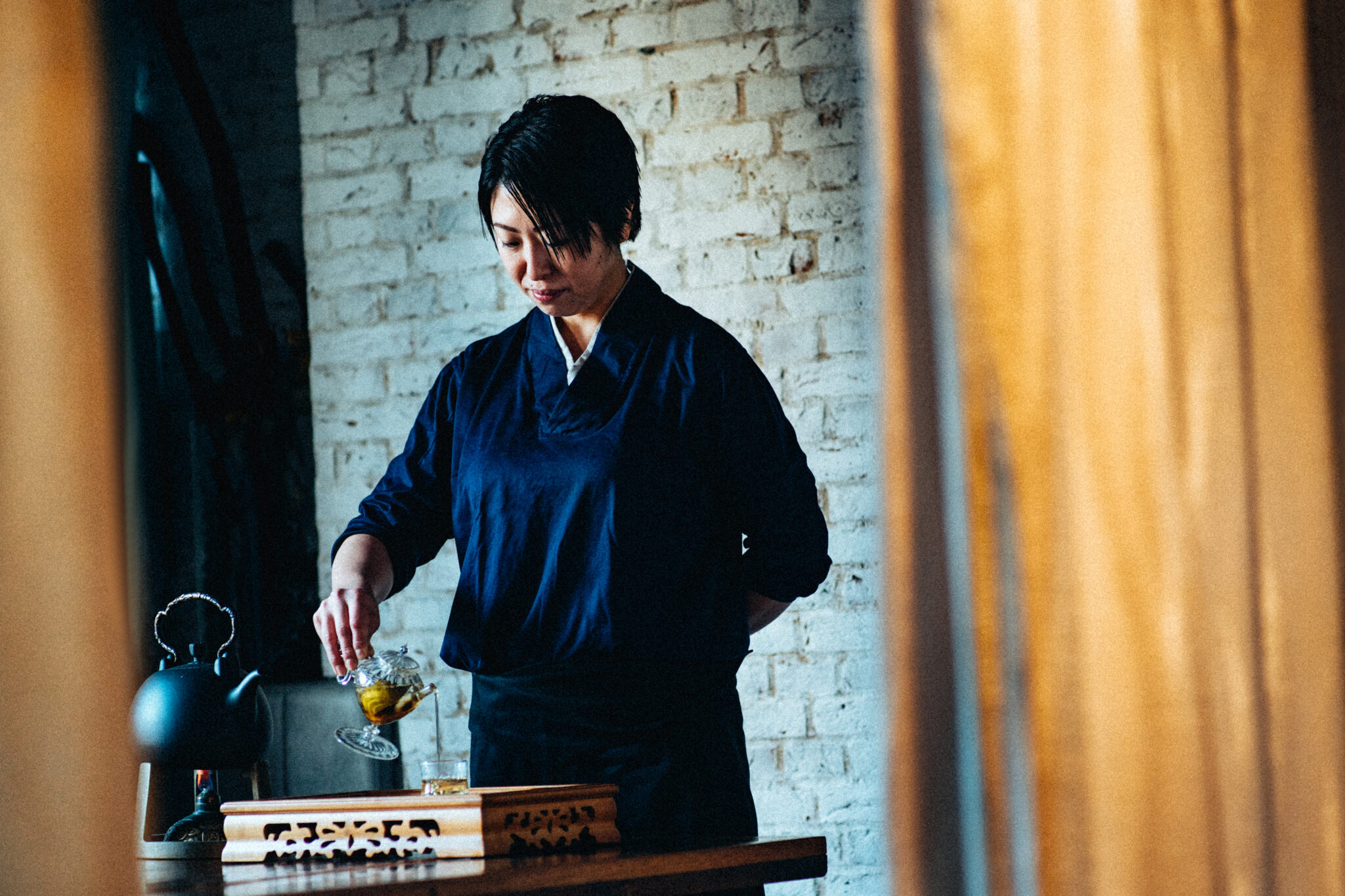Shikohin are luxuries that change throughout time but remain an integral part of our lives.
Sober curious is a concept that is growing in popularity, especially among the younger generations, in which people make a conscious decision not to drink alcohol. In response to this trend the choices of non-alcoholic luxury drinks are also on the rise.
Marina Fujimoto began her career as a wine sommelier and later obtained an official national certification from China to become a Tea Master. With a deep understanding of both alcoholic and nonalcoholic drinks, she is an invaluable person in today’s food scene and expands the possibilities and freedom for both types of drinks.
Fujimoto shares, “My hope is to remove all the boundaries surrounding tea. I want to become a tea sommelier who can attract more people to become fans of tea.”
Fujimoto hopes people will “feel relaxed and tipsy through tea, without alcohol.” We visited her to find out more about the “tea tipsy” experience.
How a wine sommelier became enchanted by tea
Wine sommelier and tea master Marina Fujimoto serves wine and tea at Tsugumi, a Chinese restaurant in Nishiazabu, Tokyo.
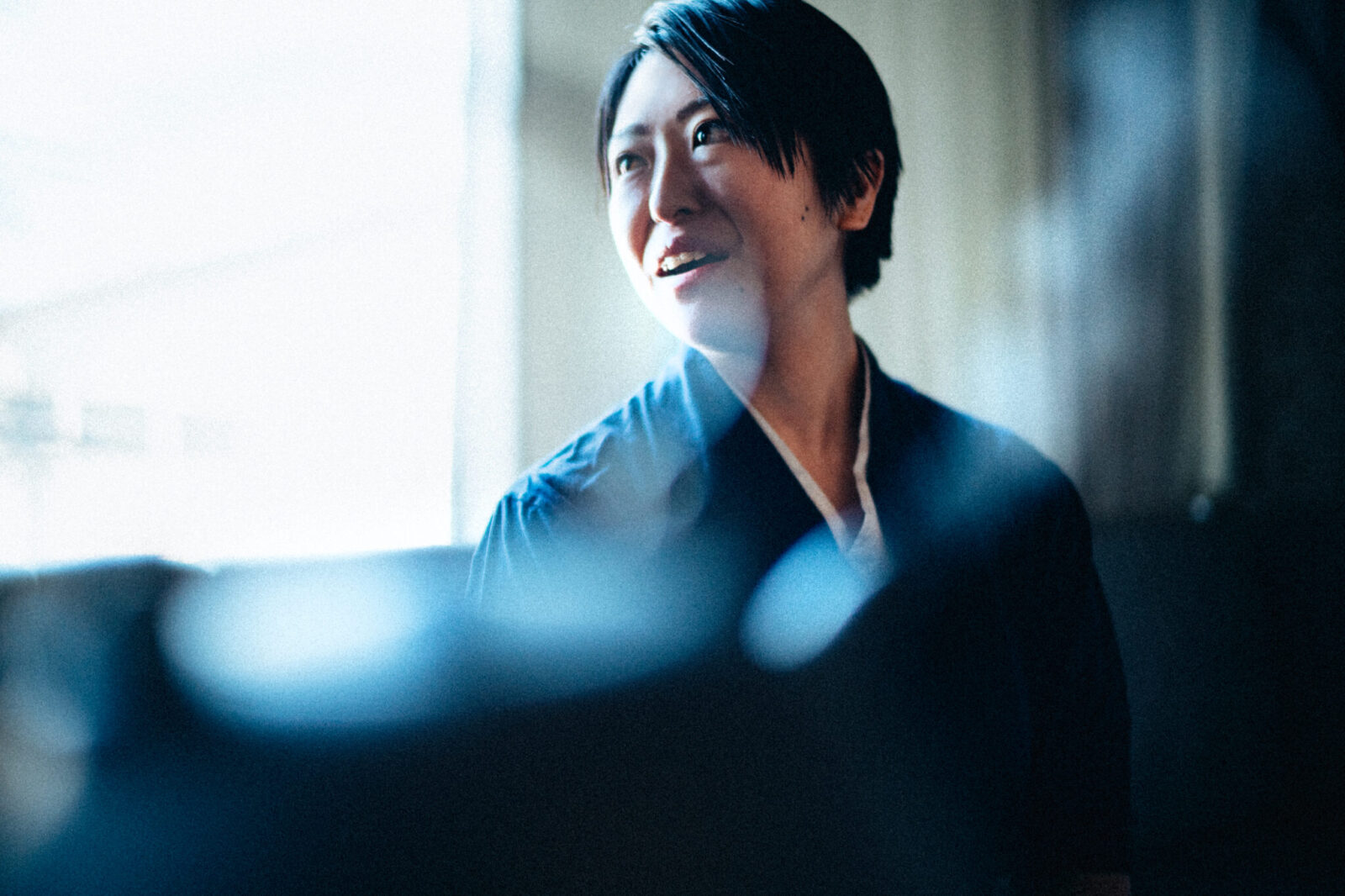
She started exploring the world of Chinese tea while she worked as a wine sommelier. Her unique combination of knowledge is based on her assertive pursuit of interests.
After graduating from a university in Kyoto, Fujimoto worked for three and a half years at a tourist association in Kinosaki Onsen in her hometown of Kinosaki, Hyogo Prefecture.
When Kinosaki Onsen was listed in the Michelin Green Guide Japan, the number of foreign visitors rapidly increased. Fujimoto felt the need to study English so she decided to study abroad in Australia at the age of 26.
Although she went to study English, she was also interested in wine so she found a job at a winery.
“I worked at the winery for two years and was able to have a really immersive experience there. During the peak harvest season I helped smash the 5 tons of harvest a day. When I started exploring wine on a deeper level, I became interested in serving and my sommelier friend who was working in Australia told me that the best place to learn about service was Japan.”
After receiving this advice, Fujimoto was introduced to Yukihiro Shindo, the manager of three restaurants, Sushi Hazan, Yakitori Uzura, and her current workplace Tsugumi.
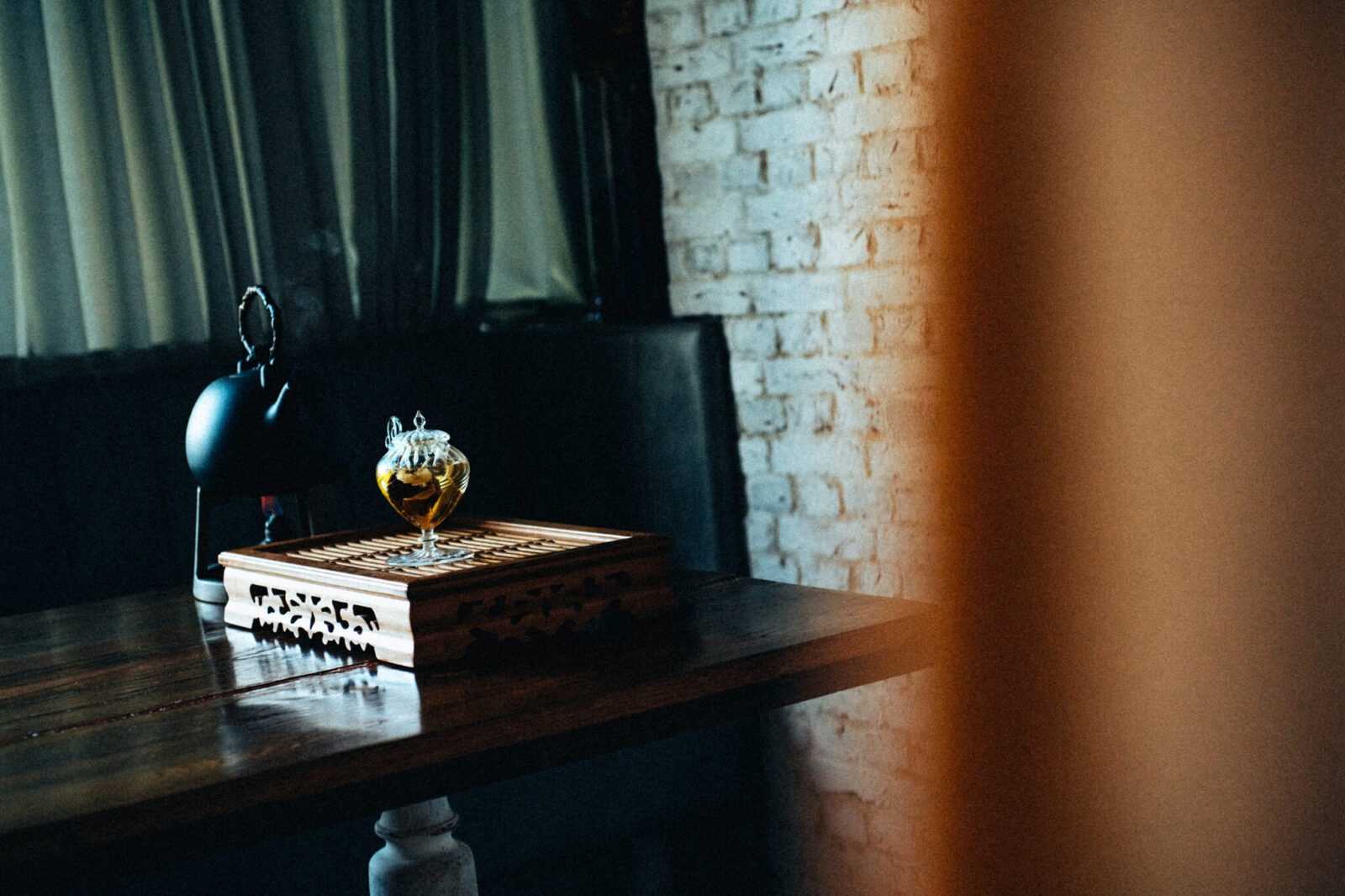
At 29, Fujimoto decided to return to Japan right away, but soon after she found herself facing a conundrum.
“I found my first restaurant job at a high-end Italian restaurant in Nishi-Azabu, and it was my first time working a service job. They say that experience is everything when working as a sommelier, but I am not much of a drinker so I realized my limit as a sommelier right away.”
It was during this time that Fujimoto happened to visit GUDDI, a store that specializes in Chinese teas and tea utensils.
“The tea I drank there enchanted me and I got hooked on the world of Chinese tea. I had the Da Hong Pao tea, which is said to be the king of Wuyi Rock Tea (oolong tea).”
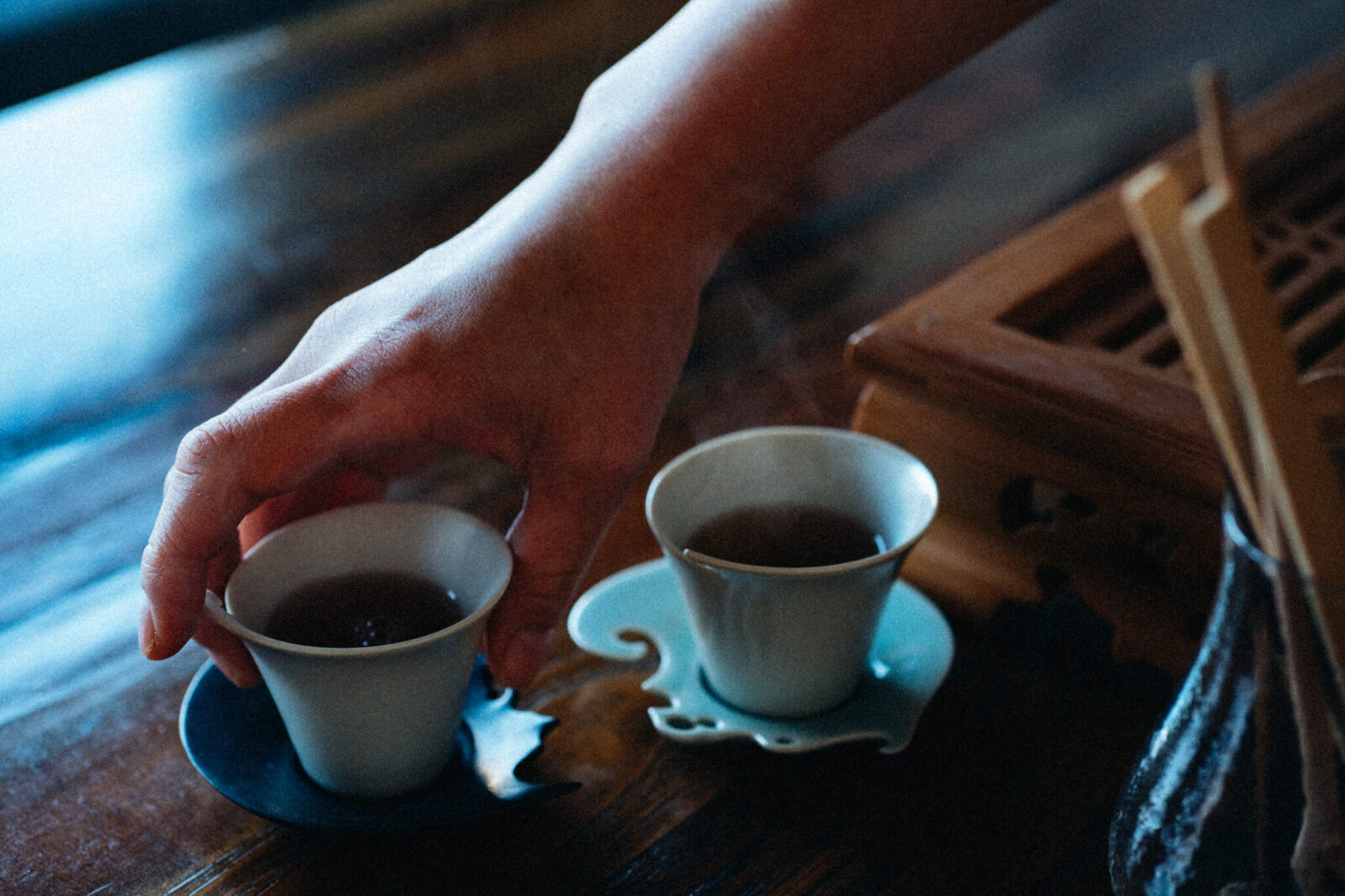
Wuyi Rock Tea is produced in Fujian Province and is a luxury tea that is known as the king of oolong teas. It is called “rock tea” because it comes from tea trees that grow on weathered rocks on the mountainside.
We tasted the Wuyi Rock Tea that Fujimoto served us as she spoke. The tea has a complex and rich flavor with an elegant sweetness and pleasant astringency that follows its fragrance.
Oolong tea is a popular tea in Japan, but this tea’s rich fragrance rewrites our preconceptions of oolong tea.
Wuyi Rock Tea is said to go well with savory brown sauce dishes because it ignites the Maillard reaction. At Tsugumi it is often paired with Peking duck and dishes made with miso and bean sauces.
“Around the time I first tasted Wuyi Rock Tea, there was a Mie Prefecture Tea Event in Omotesando where I tasted Kabuse Tea for the first time. I remember exclaiming in delight in the quiet venue, it was so delicious.”
After being astonished by the flavor of Wuyi Rock Tea and Kabuse Tea, Fujimoto’s interest in tea grew deeper so she began attending Chinese tea classes held by the tea masters at GUDDI. From there she looked up all the available Chinese tea classes and attended every workshop that caught her attention to expand her exploration of tea.
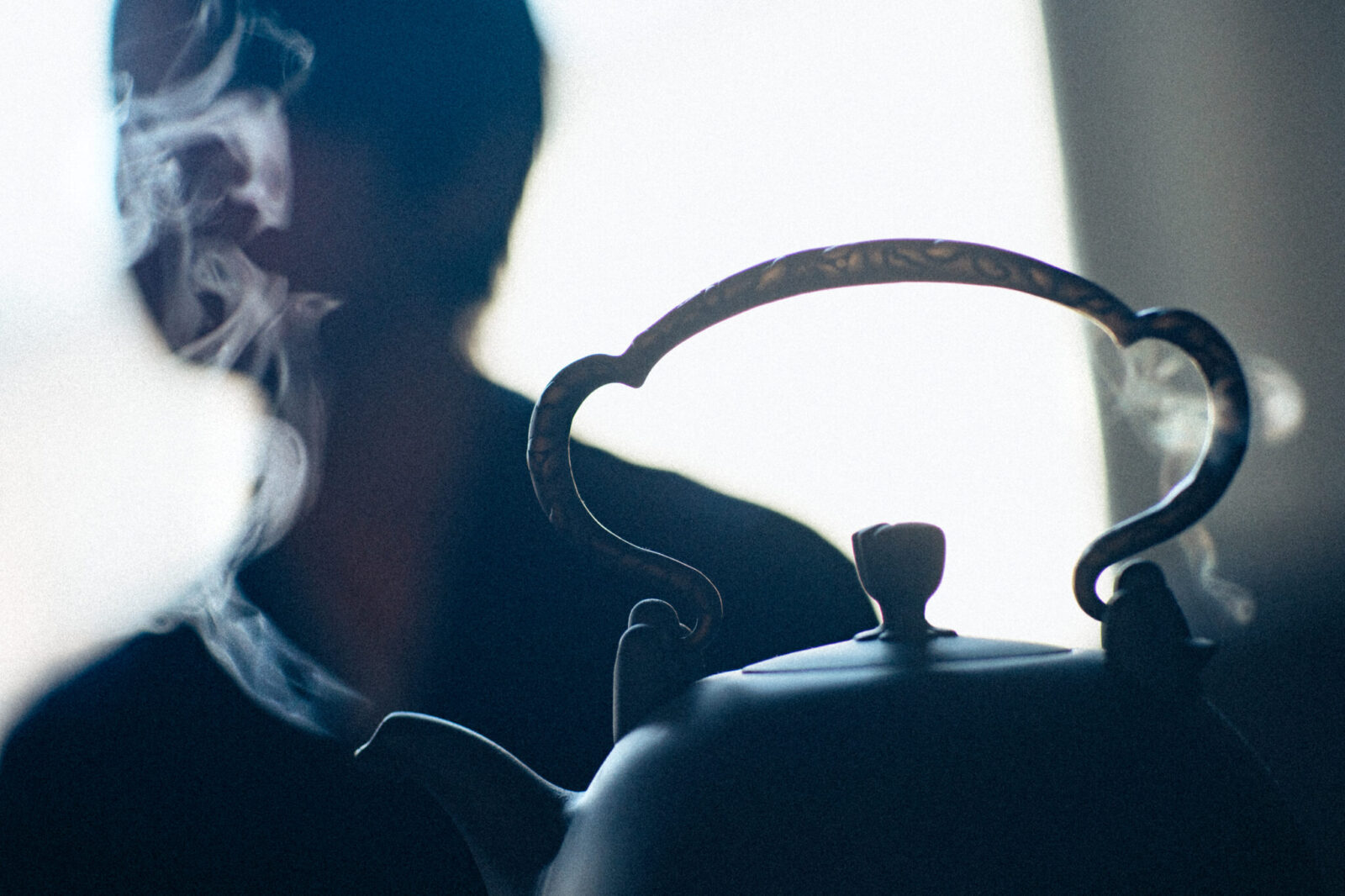
Nonetheless, Fujimoto still identified her main job as being a sommelier. She looks back at this period in her life and says, “At the time I did not think tea would become a part of my career.”
In 2021, she was invited to work as a sommelier at LURRA°, an innovative restaurant in Higashiyama, Kyoto so she decided to move. However, her desire to explore tea pushed her to move back to Tokyo and obtain the official national certification from China to become a Tea Master.
It was at this time that she was invited by Shindo to join as the opening staff of Tsugumi. Shindo suggested that as a Tea Master, she can explore how to pair tea with Chinese food at his restaurant.
The Chinese Tea Master certification allows a high level of freedom
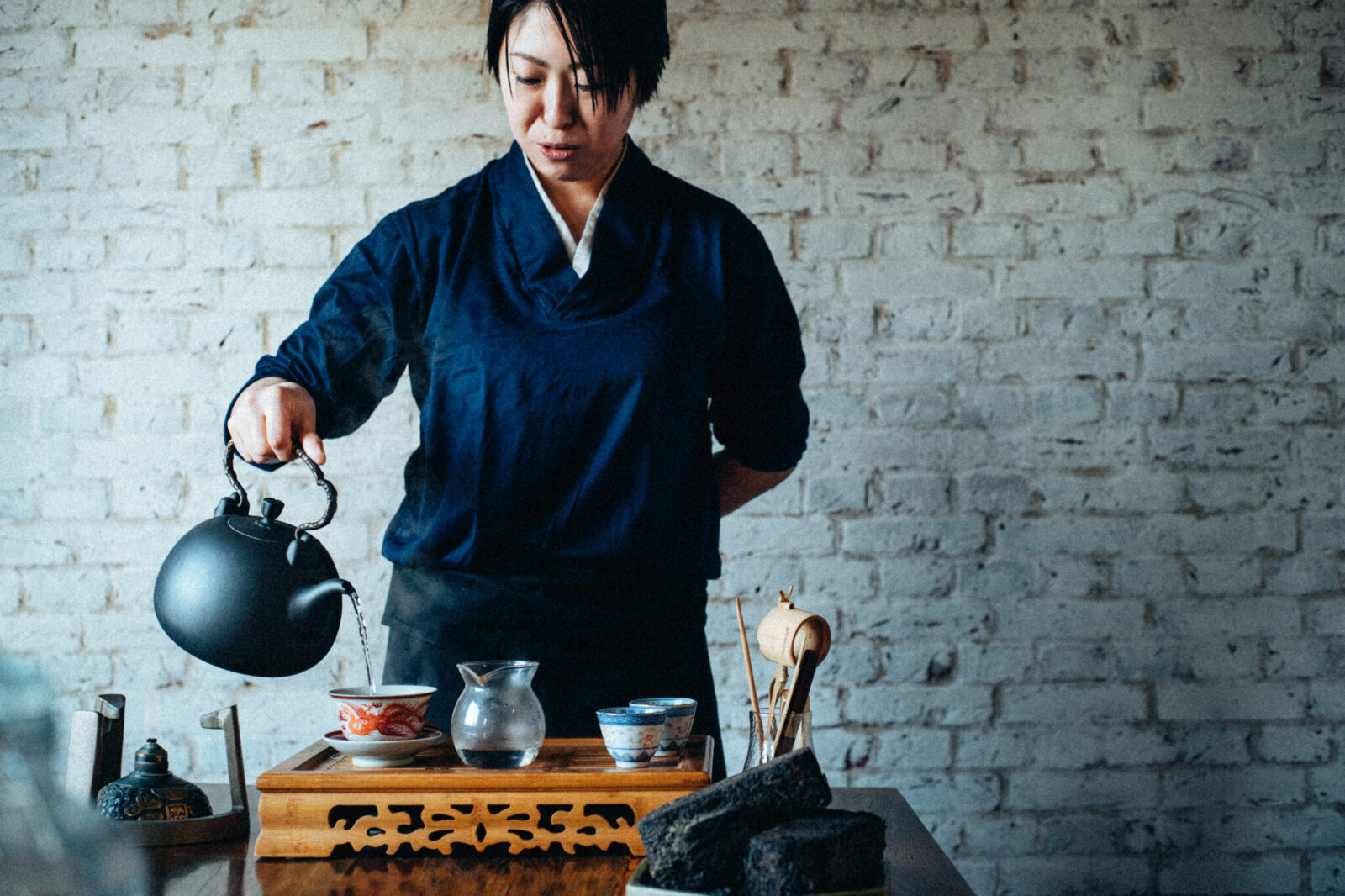
As a tea pot that is placed on top of a fire quivers slightly from the boiling water, Fujimoto skillfully picks it up with her right hand. She tells us that the placement of her left hand behind her back is one of the few definitive manners in Chinese tea mastery.
“We primarily use our right hand to brew tea. Rather than busily moving both the right and left hand around, keeping the unused left hand behind you is more beautiful and clean. However, there are cases where we hold a lid of a bowl or tea pot with our left hand, so it is case by case. There was a tradition of foot binding in China, so perhaps the idea of having movement and parts as small as possible still influences their ideal of beauty.”
“There are a number of rules and formats that one has to learn in taking the tea master’s exam, such as not pointing the teapot spout towards the guests. We must also learn to identify good and bad tea leaves, and become knowledgeable of history. These are all important in passing the exam.”

The Tea Master certificate aims to nurture professionals who can judge the quality of teas and serve it in the best way possible, but Fujimoto says it is not as difficult as the sommelier exam.
“The Tea Master certification was developed by the Chinese government as a way to help rural people who could not go to university obtain a certification to help them find work. I heard that in recent years it has become harder for people outside of China to obtain this certificate because they are trying to prevent the outflow of skills.”
“I got my certification at Hua Tai Tea in Shibuya, which is an officially recognized tea shop by the Chinese government. It was the only school in Japan that was approved to offer the Tea Master exam, but they no longer offer the Tea Master courses there either.”
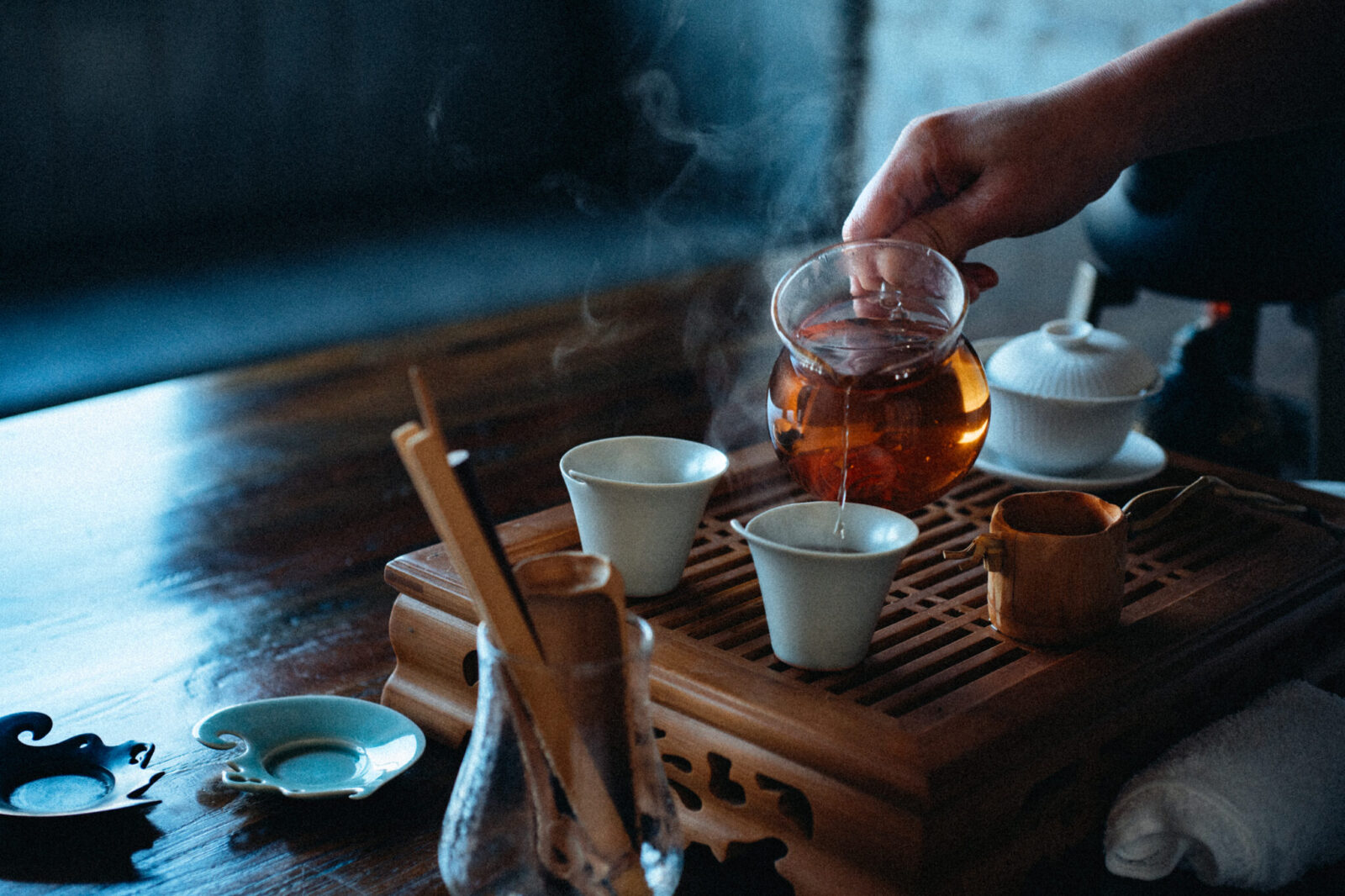
The aim of the Chinese Tea Master is to serve tea in the best way possible, but it allows a lot of freedom and a lot of emphasis is put on self expression.
Because Fujimoto had a background as a sommelier, she incorporated a style of pouring tea into wine glasses and decorated the glasses with grapes to embody the image of wine. Her original demonstration received positive acclaim and she passed the Tea Master exam.
“I think that allowing this kind of freedom is a very positive side of Chinese tea. The most important and key point is to make delicious tea.”
“Tea Tipsy” is a meditative experience with tea
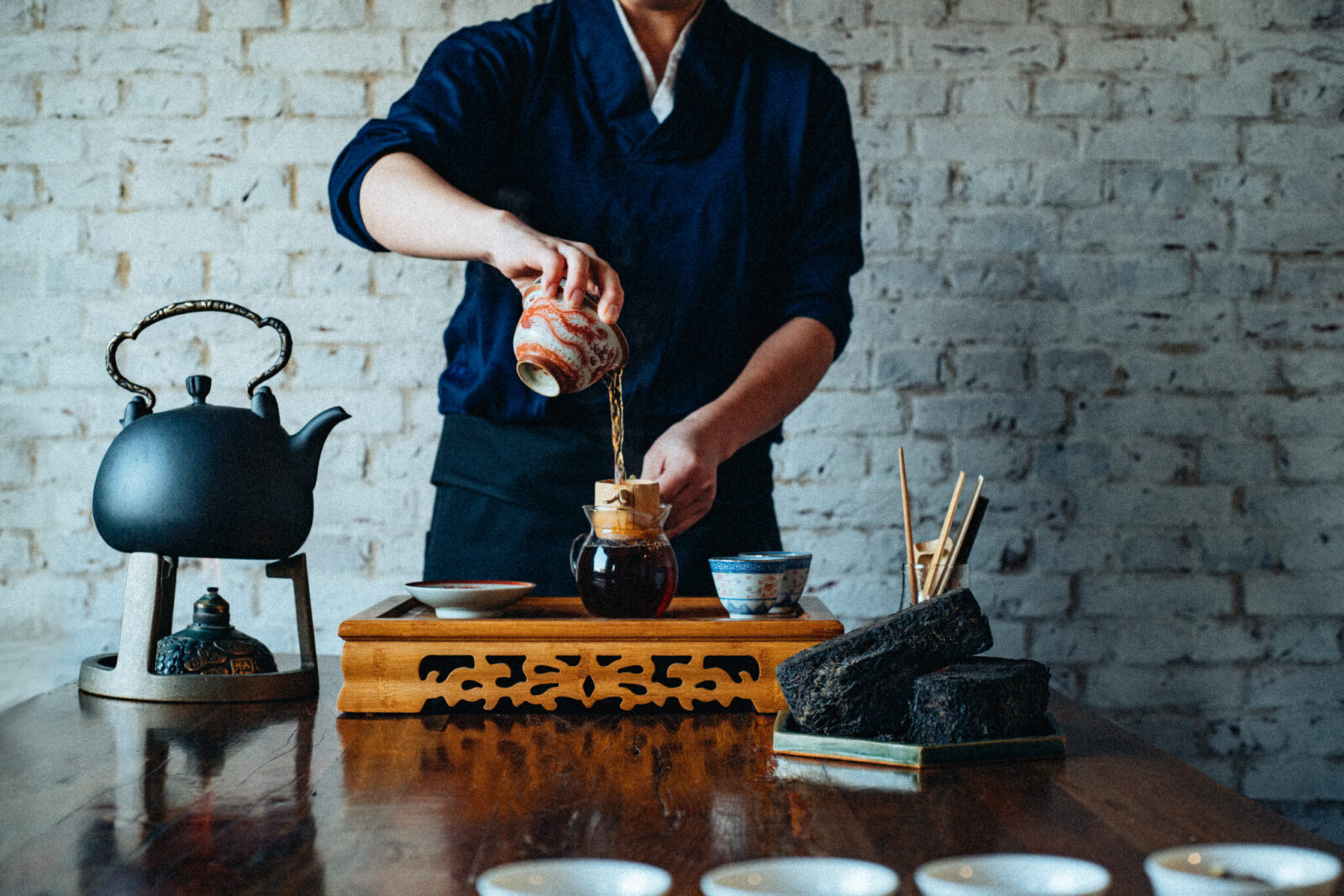
Fujimoto brews tea skillfully and elegantly as she speaks to us.
“I cannot pour the hot water in a straight line if my mind is distracted so I try to calm my mind and focus before brewing tea.”
Fujimoto not only serves wine and tea as a sommelier and Tea Master, she also regularly holds Chinese tea classes at chayoi-茶酔-, the shop she runs and also sells tea in.
“Tea Tipsy” refers to the sensation of feeling light and afloat that comes from the effect of caffeine and the body warming up from drinking tea.
Fujimoto says “I hope people can feel nice and tipsy without drinking alcohol and simply through drinking tea.”

“I have experienced becoming tipsy with tea, and although the scientific basis for it is unclear, you really get a sensation of being lifted and floating in the air. Perhaps it is like that feeling you get in meditation, or that comfortable feeling you experience right before you fall asleep.”
“Teas such as Teiguanyin and Oolong teas are said to be most effective in causing tea tipsiness. From my experience I feel that pu-erh tea made from ancient tea trees also has a strong effect. It is similar to how aged wine and not very aged wine have a very different intoxicating effect.”
How and where you drink tea also changes the experience, which is true for alcohol and other shikohin beverages.
Fujimoto says, “I want to provide high quality raw pu-erh tea and have guests enjoy drinking it slowly and deliberately in a serene environment.”
Next, Fujimoto starts crushing a block of Golden Fucha, a tea made with the microorganisms of Hunan Province’s golden flower, with a tea knife.
She explains that the tea knife is a tool used to break apart compressed tea leaves such as pu-erh tea or flowering tea balls.
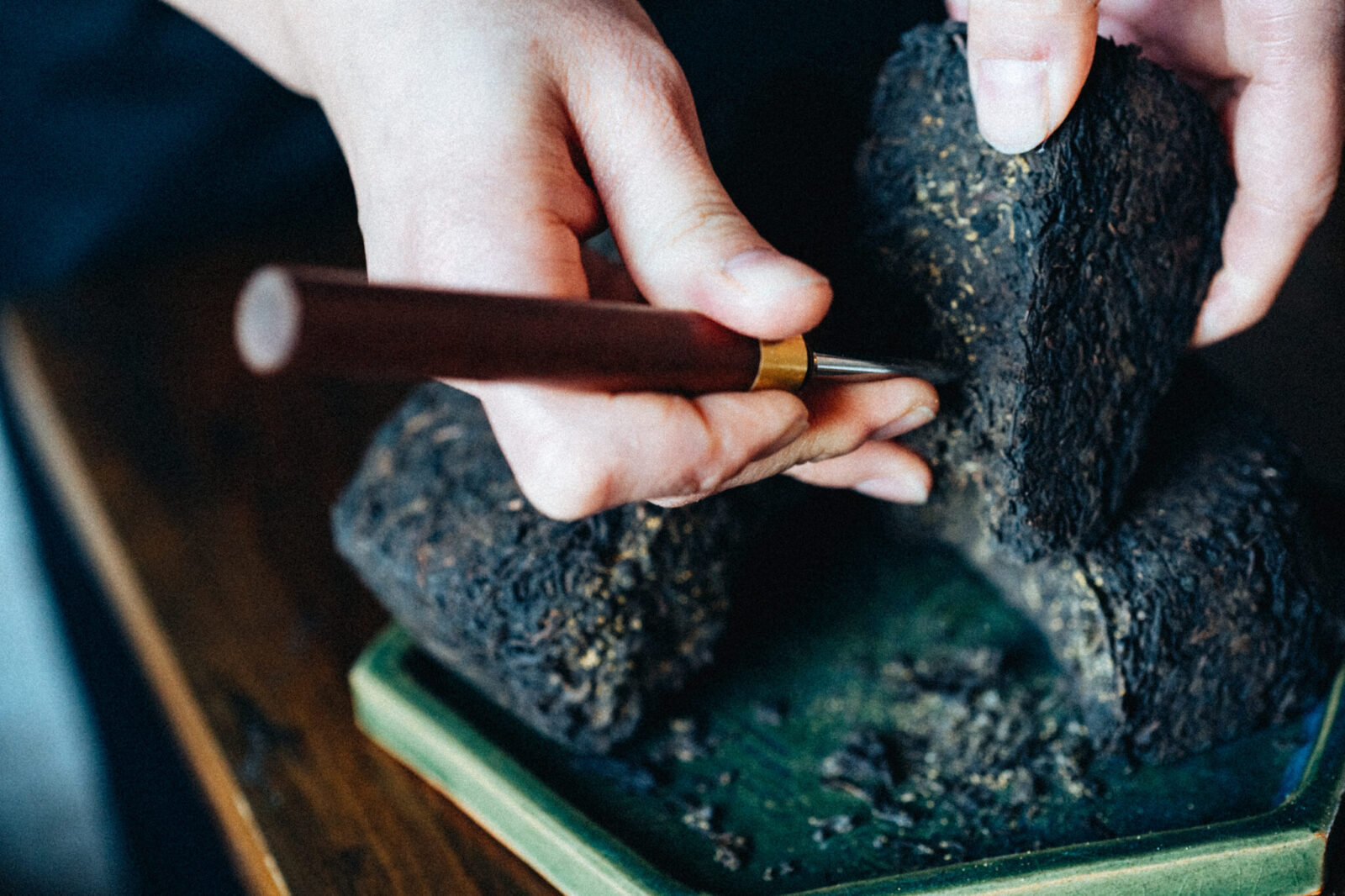
Depending on the environment in which the tea was fermented, sometimes dust needs to be removed from the tea block so the first pouring of hot water is used to wash the tea leaves before the first brew is poured for drinking.
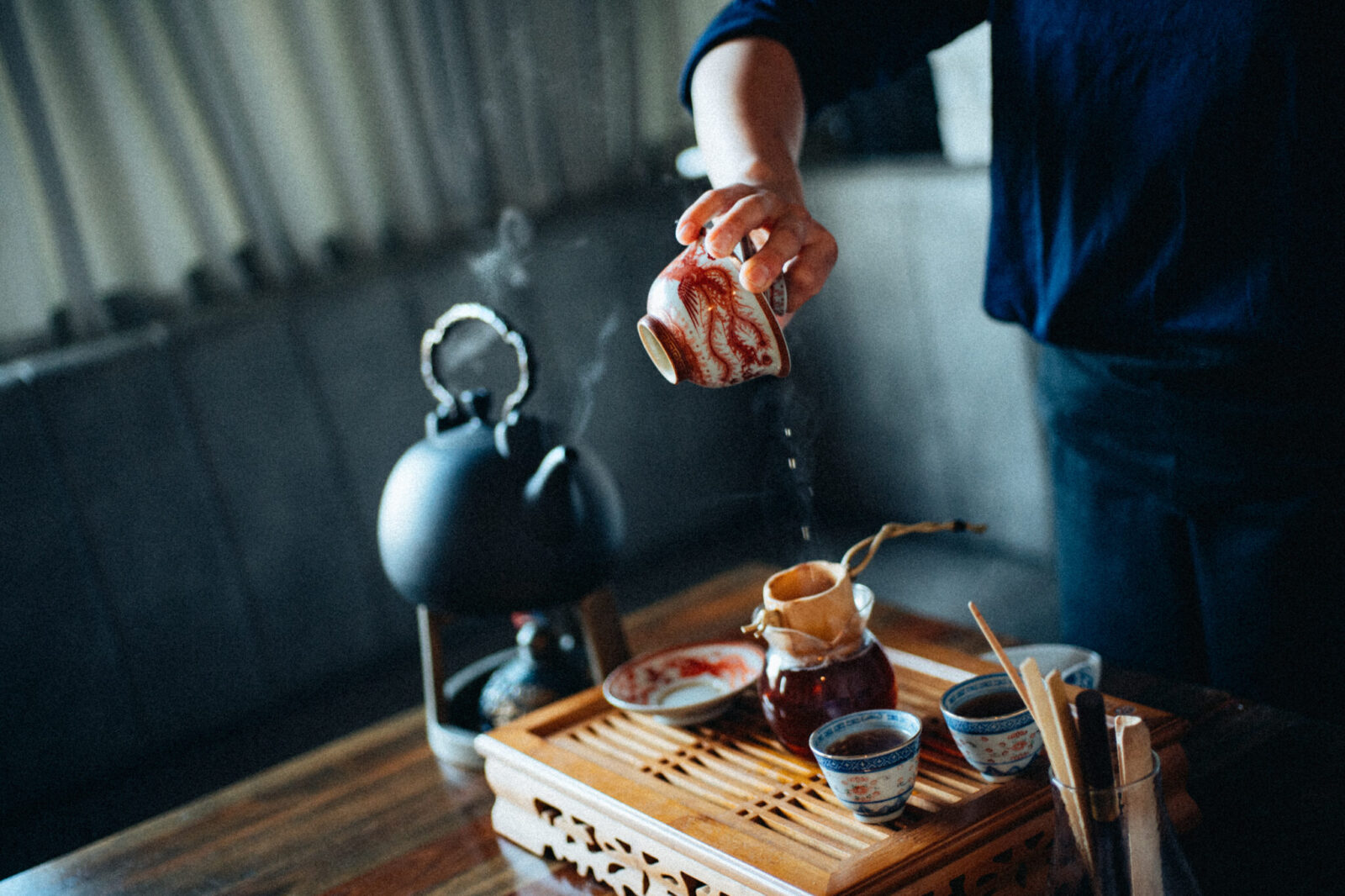
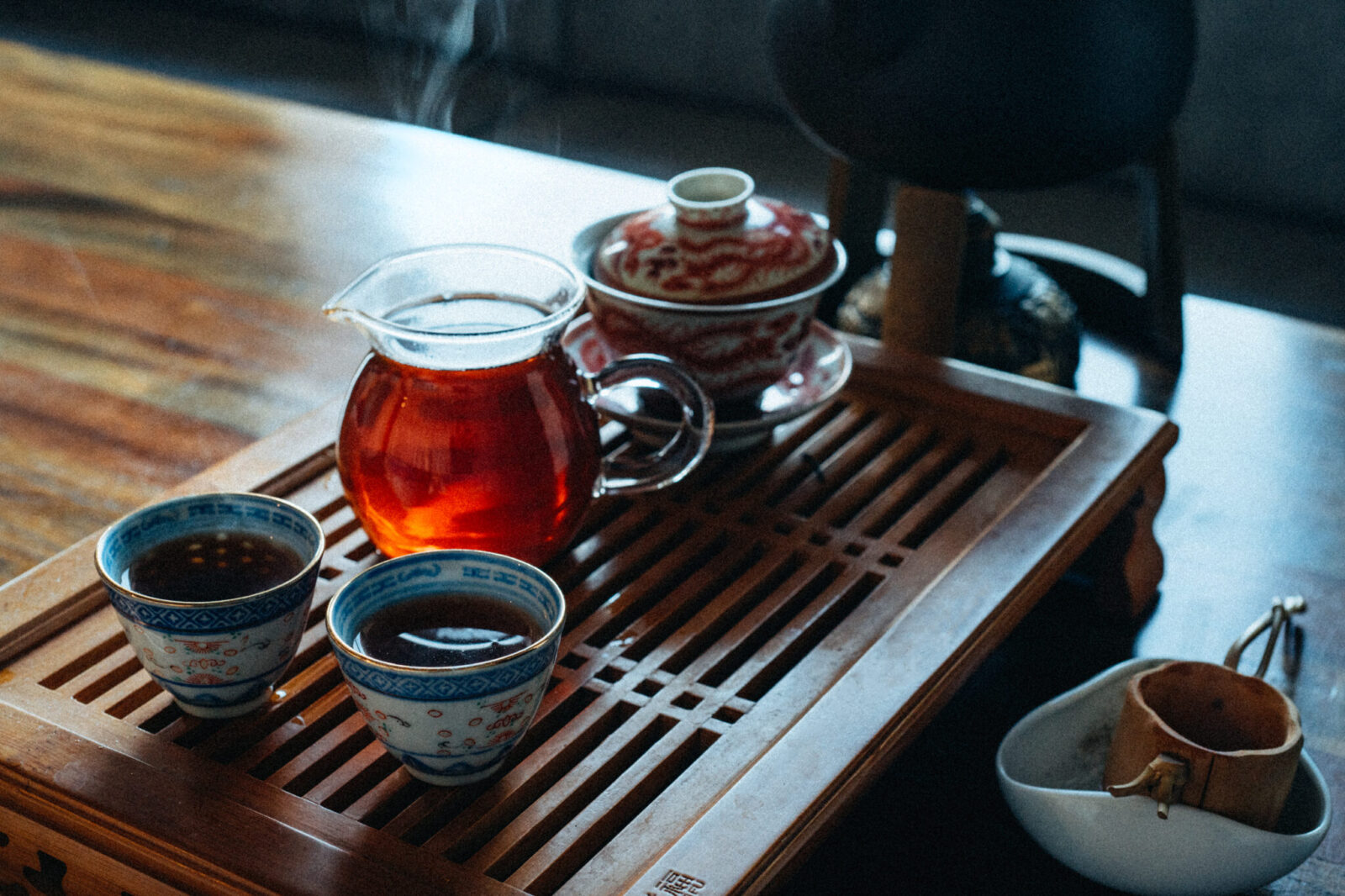
The Golden Fucha has a mellow and smooth flavor which is in contrast with its complex and smoky aroma. It can be brewed multiple times and is said to be effective for weight loss because it has fat-dissolving enzymes that help with digestion.
“Fucha is a relatively accessible tea that is often served in pairing with food. In order to promote these teas I sell them in 5 gram increments at chayoi-茶酔- and Tsugumi. I hope to make it easier for people to try different teas and discover the wide variety of tea.”
“For example, many people drink mugi-cha (barley tea) everyday and they buy it in 100g or 200g increments. I hope that one day Chinese tea will be just as accessible and a common part of our daily lives.”
Fujimoto smiles as she says, “It would make me happy if tea became a natural part of our everyday lives.”
“It can be any tea, from black tea to Japanese tea and herbal teas. Tea can be made by simply having a cup and some tea leaves and hot water. There is no need to buy a tea set in advance. I opened chayoi-茶酔- in hope that it will make it easier for people to enjoy tea.”
Blended teas that bring together Japanese, Chinese and Western teas
Next, Fujimoto prepared a bergamot tea for us. It had a refreshing flavor and a slightly bitter aftertaste that was just right.
This tea is an original blend that is made using fresh bergamot that is dried in a dehydrator after it is steamed. Besides the tea leaves and bergamot, it is blended with ginger, dates, wolfberry and iced sugar.
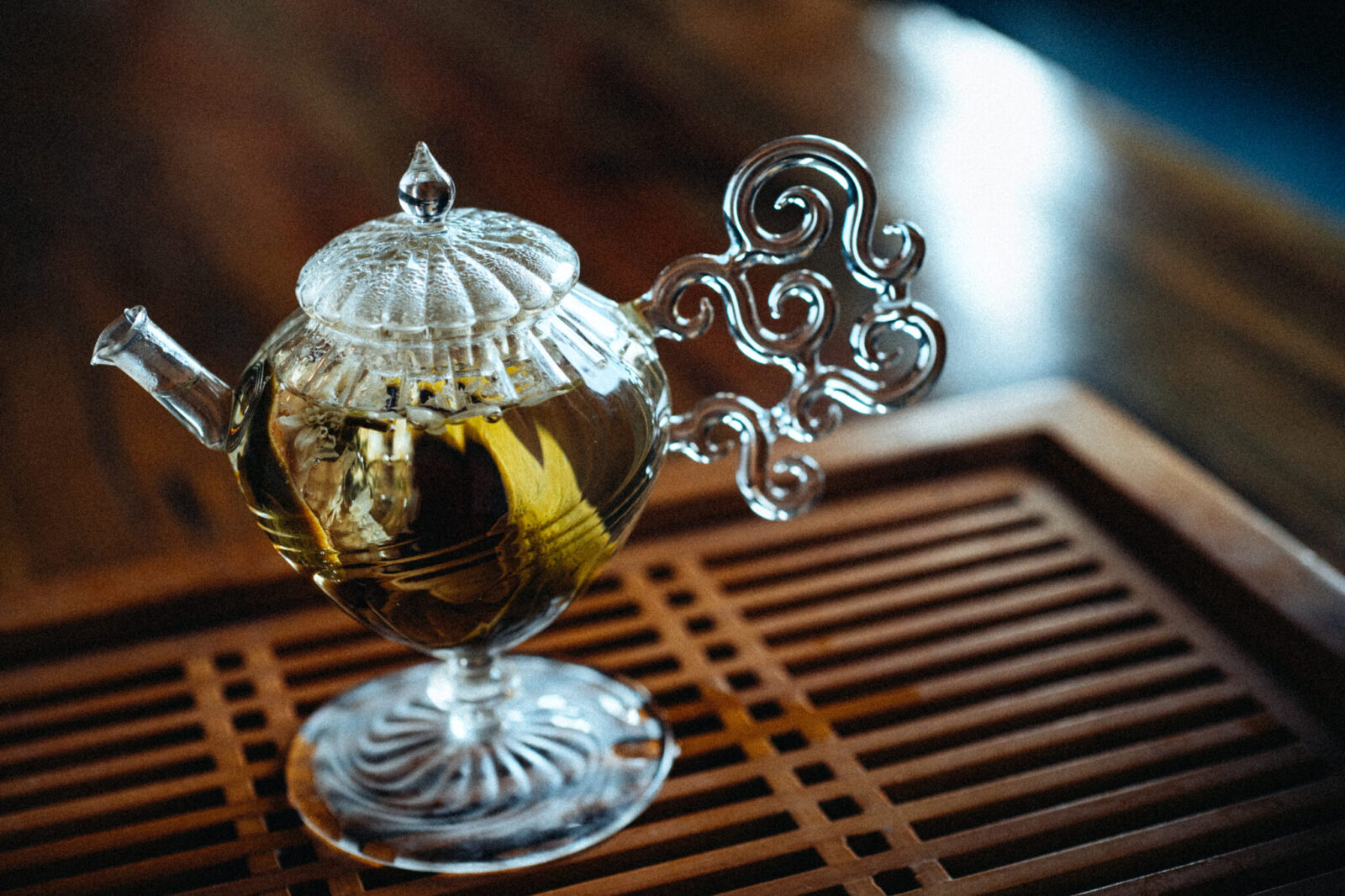
Teas that are blended for specific requests, such as skin care teas and teas for warming the body, is popular at chayoi-茶酔-. They not only serve individual customers but also prepare blended teas for beauty salons. These teas are blended with the image of feminine beauty.
“I was asked by a beauty salon to make a blended tea with the themes of beauty, health and detoxification. We blended herbal teas and Chinese medicinal herbs and made a tea that can be brewed simply with hot water.”
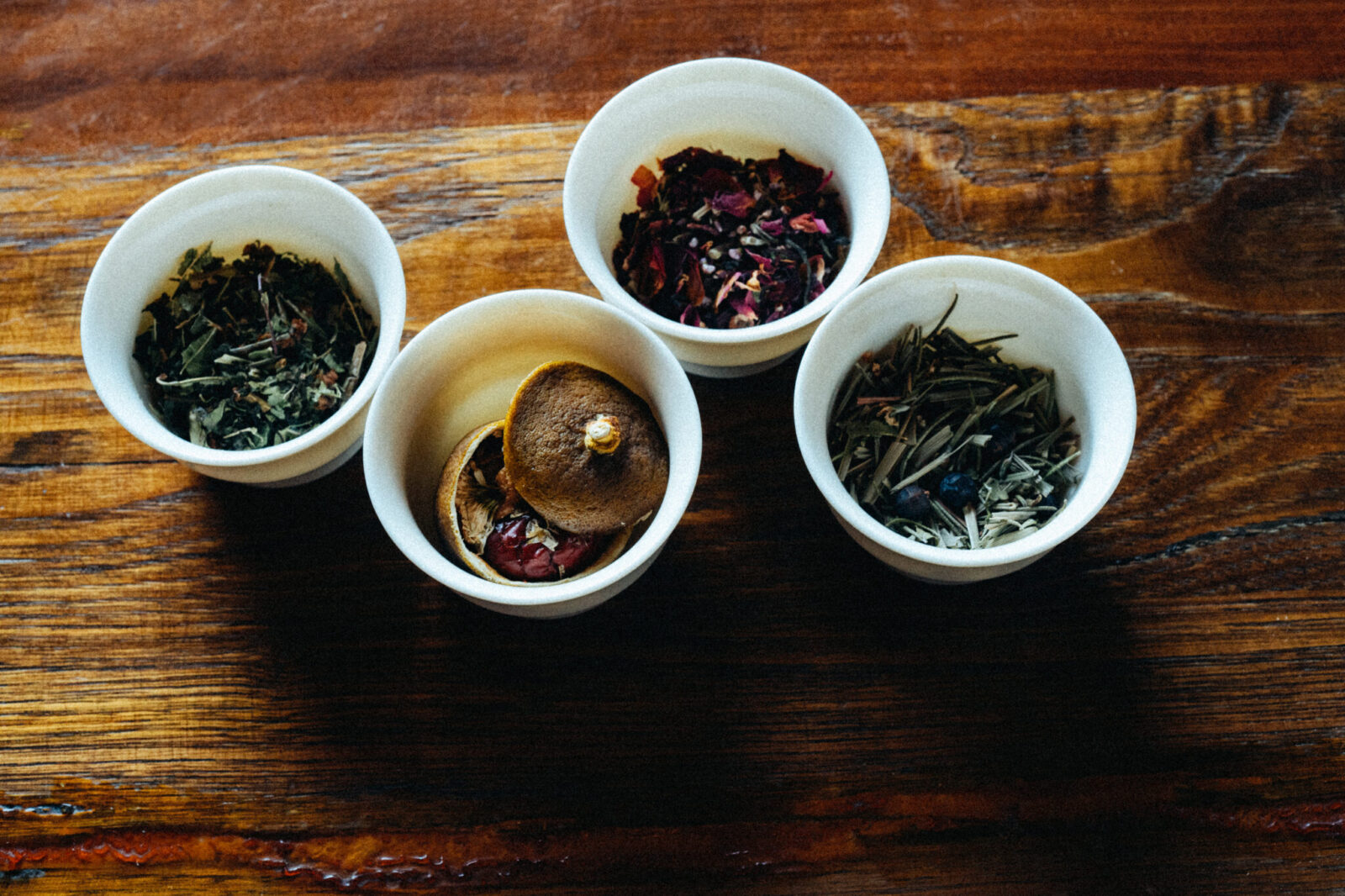
Providing drink experiences that create new fans of tea
Although chayoi-茶酔- offers a wide range of teas from Chinese teas, herbal teas, Taiwanese teas, Japanese teas, Matcha, black teas, etc, Fujimoto says that running a tea shop is not her main goal.
“I think more people who come to our restaurant are experiencing tea in a new way and are delighted by the experience and deliciousness of tea. I think this is the most natural and effective way for more people to become a fan of tea.”
“One time a customer ordered a non-alcoholic drink and I started burning a rosemary leaf to add flavor to tea, and another customer who was drinking an alcoholic drink became very interested in what I was doing. The next time that customer came to the restaurant, they ordered a non-alcoholic drink.”

“Although wine and Japanese sake needs to be stored at certain temperatures, you only need to pour the drink for the customer when serving it. On the other hand, non-alcoholic drinks are prepared with a little more presentation and creativity so it leaves an impression on the customers as a fun and interesting experience.”
Fujimoto believes that tea has the potential to become a much more complex and luxurious shikohin experience through complex blending as well as the use of tea utensils and other demonstrative arrangements.
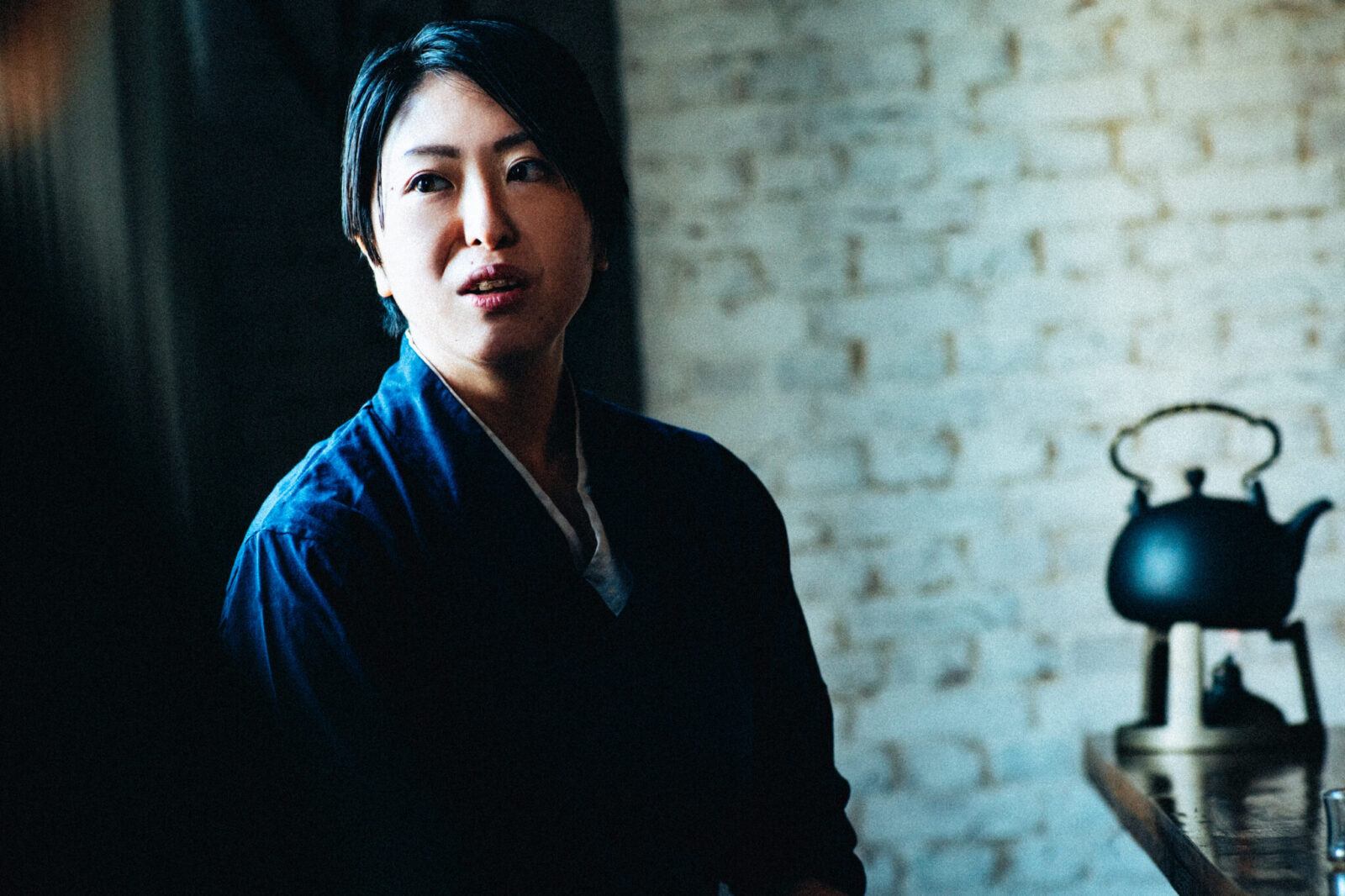
Another thing Fujimoto is careful about when serving non-alcoholic drinks is to serve freshly brewed tea as quickly as possible.
“I have developed my own methods to instantly extract the best flavor of the tea so I can serve it to customers in a short time. Many people have a presumption that ordering tea takes time, so that is why I try to serve delicious tea as quickly as possible.”
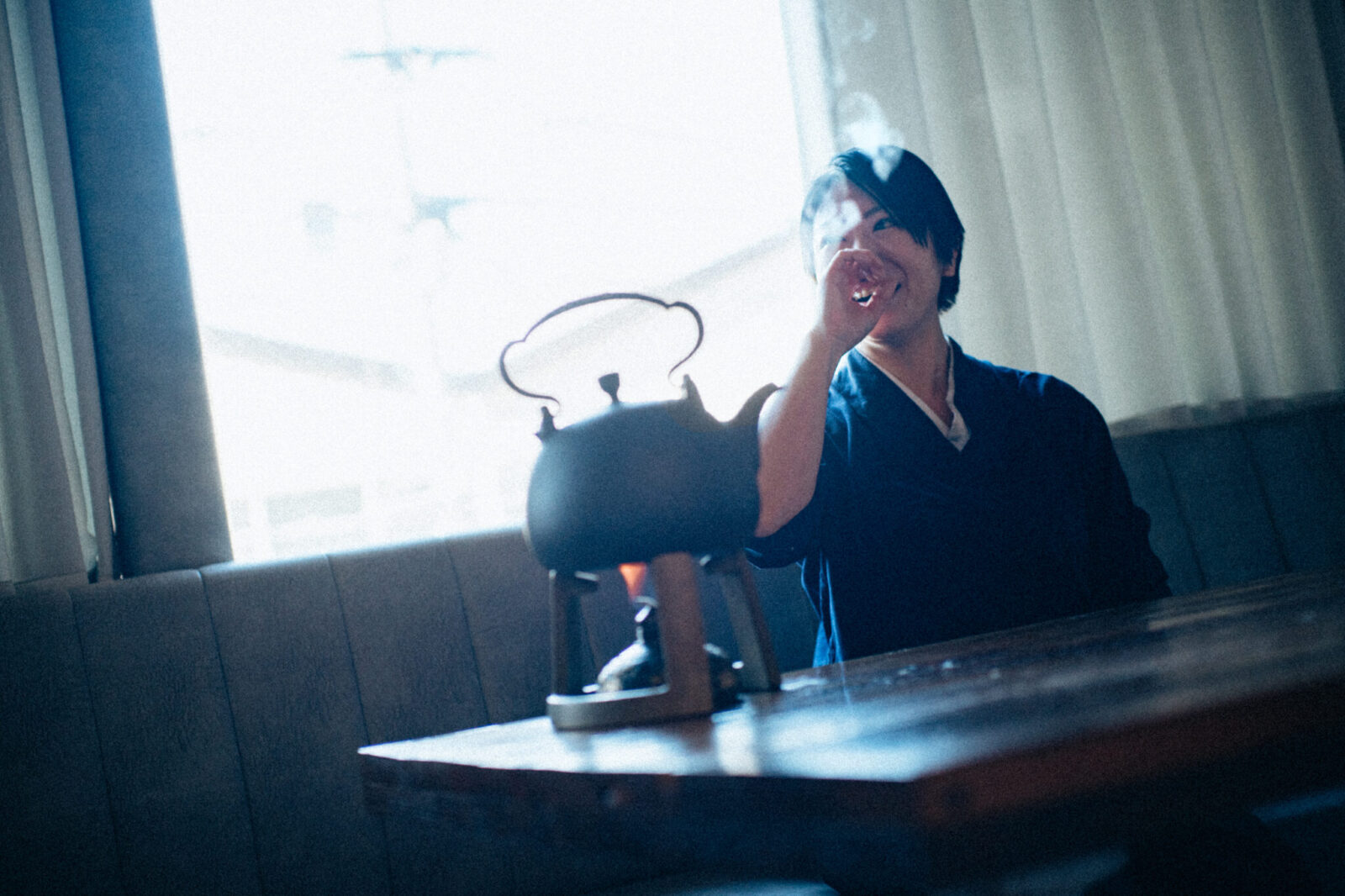
Fujimoto explores and experiments with tea, but what is her ultimate goal for creating “tea tipsy” experiences?
“In the world of wine there are various categories such as red, white, orange and rose and in wine pairing they use all the varieties. However, with tea people tend to ask what kind of tea I am serving, such as whether it is Chinese tea pairing or Japanese tea pairing.”
“I want to be able to take away these boundaries surrounding different teas and become a tea sommelier that can serve all types of tea as one.”
As a tea sommelier Fujimoto continues her explorations to expand the boundaries of tea and attract new fans to the world of tea.
All articles on our feature Indulgence and Explore
After taking a food sensory test during university and discovering a keen sensitivity to “umami”, she traveled for food in and out of Japan for 25 years. While working at a publishing company, she was in charge of the gourmet food section of a fashion magazine. Later, she worked for an informational magazine before becoming independent in 2013. Now she writes articles and has a series on food for online and printed mazagines.
Editor. Born and raised in Kagoshima, the birthplace of Japanese tea. Worked for Impress, Inc. and Huffington Post Japan and has been involved in the launch and management of media after becoming independent. Does editing, writing, and content planning/production.
